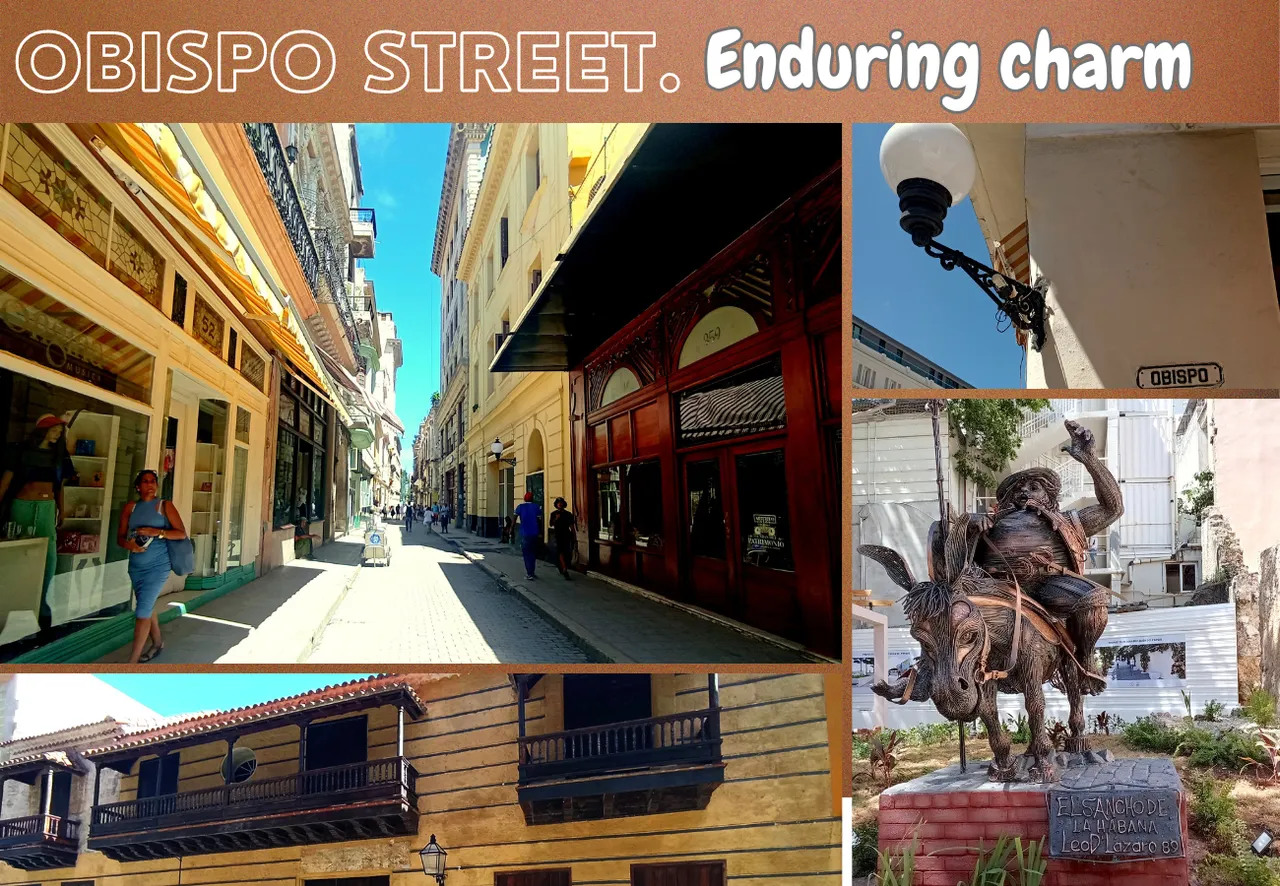
Join this fascinating tour through one of the oldest streets in Havana: Obispo Street. Its origin dates back to 1520, almost at the same time as the founding of the Villa de San Cristóbal de La Habana, which makes it a historical jewel more than 500 years old. Over the years, this important artery has undergone several restorations to preserve its splendor, turning it into a magnificent pedestrian boulevard that attracts visitors from all over the world.
Along 11 blocks, with an approximate length of 2 kilometers, from the Gran Plaza de Armas to the old Monserrate Street, today known as Avenida de Bélgica, Obispo Street immerses us in the history and architecture of the oldest part of Havana.
Únase a este fascinante recorrido por una de las calles más antiguas de La Habana: La calle Obispo. Su origen se remonta a 1520, casi al mismo tiempo que la fundación de la Villa de San Cristóbal de La Habana, lo que la convierte en una joya histórica con más de 500 años de antigüedad. A lo largo de los años, esta importante arteria ha sido objeto de varias restauraciones para preservar su esplendor, convirtiéndola en un magnífico bulevar peatonal que atrae a visitantes de todo el mundo.
A lo largo de 11 cuadras, con una longitud aproximada de 2 kilómetros, desde la Gran Plaza de Armas hasta la antigua calle Monserrate, hoy Avenida de Bélgica, la calle Obispo nos sumerge en la historia y la arquitectura de la parte más antigua de La Habana.
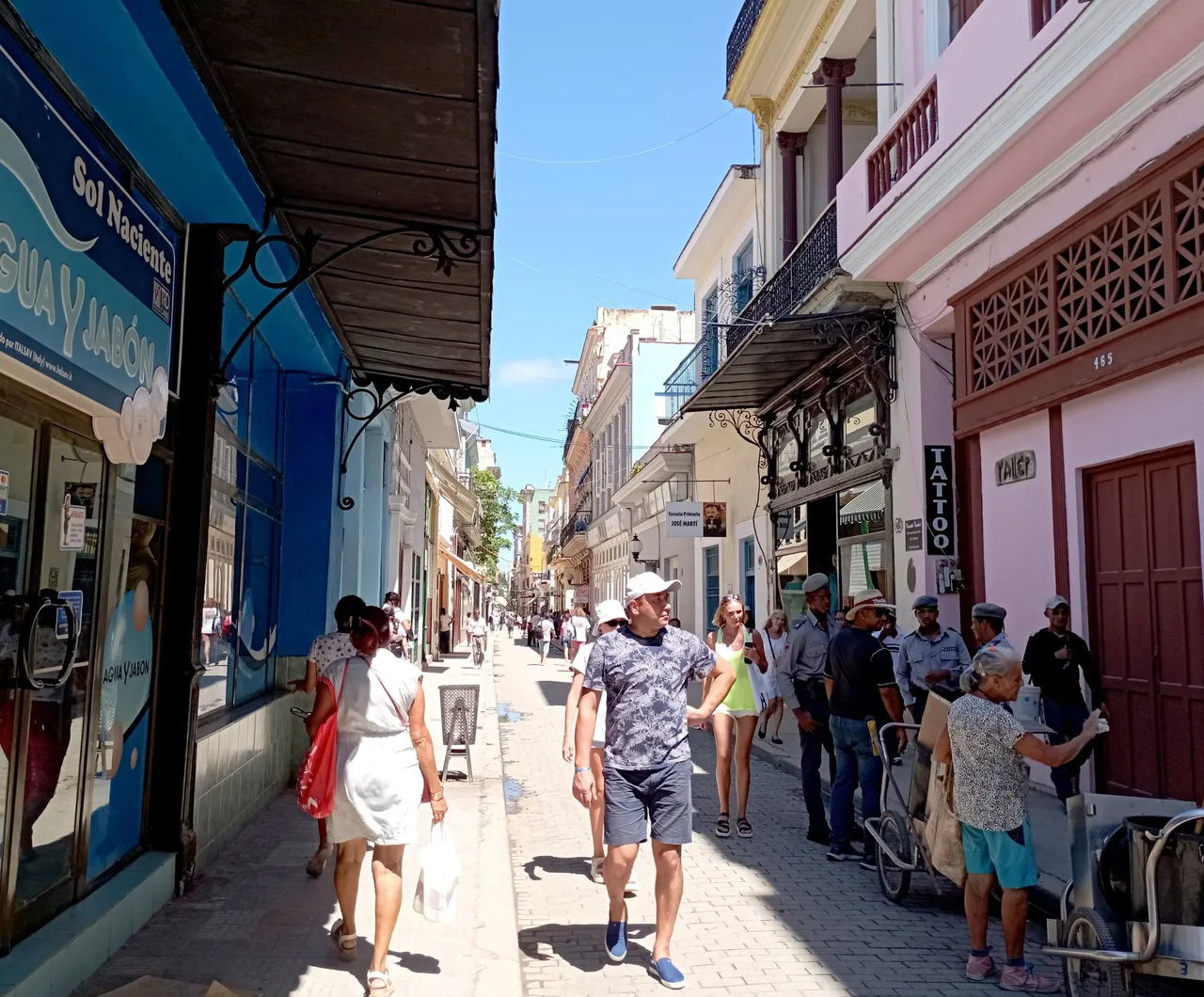
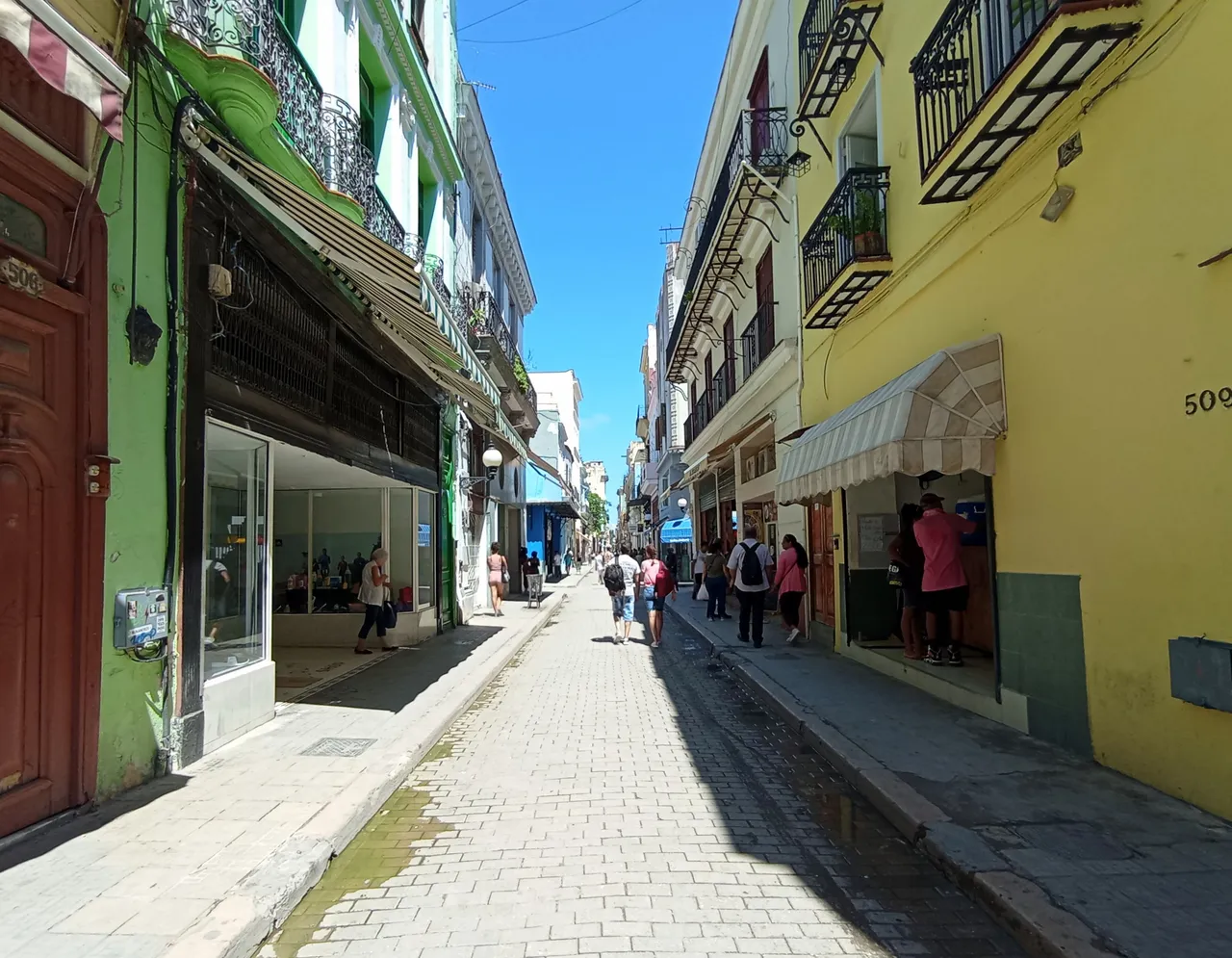
Since 1840, this street has been known for its cobblestones and the variety of stores it houses. I started this tour on Monserrate Street, where on the right is the famous Floridita and on the left the lively Plazoleta de Albear, a tribute to the creator of Havana's Albear Aqueducts.
On the next corner, on Bernaza Street, you will discover the façade of the La Moderna Poesía building, which housed a well-known bookstore and printing house. I remember very well when I went to present my final year project to the university, the engraving of the cover was done there and it was of very good quality. They also spliced and restored books. This establishment is a place of great historical importance because it was the first steel engraving factory and the most important bookstore in Cuba in those years.
Desde 1840, esta calle es conocida por sus adoquines y la variedad de tiendas que alberga. Empecé este recorrido por la calle Monserrate, donde a la derecha se encuentra el famoso Floridita y a la izquierda la animada Plazoleta de Albear, en homenaje al creador de los Acueductos de Albear de la Habana.
En la siguiente esquina, en la calle Bernaza, descubrirá la fachada del edificio La Moderna Poesía, que albergó una conocida librería e imprenta. Recuerdo muy bien cuando fui a presentar mi proyecto de fin de carrera a la universidad, el grabado de la portada lo hicieron allí y era de muy buena calidad. También empalmaban y restauraban libros. Este establecimiento es un lugar de gran importancia histórica porque fue la primera fábrica de grabados en acero y la librería más importante de Cuba en aquellos años.
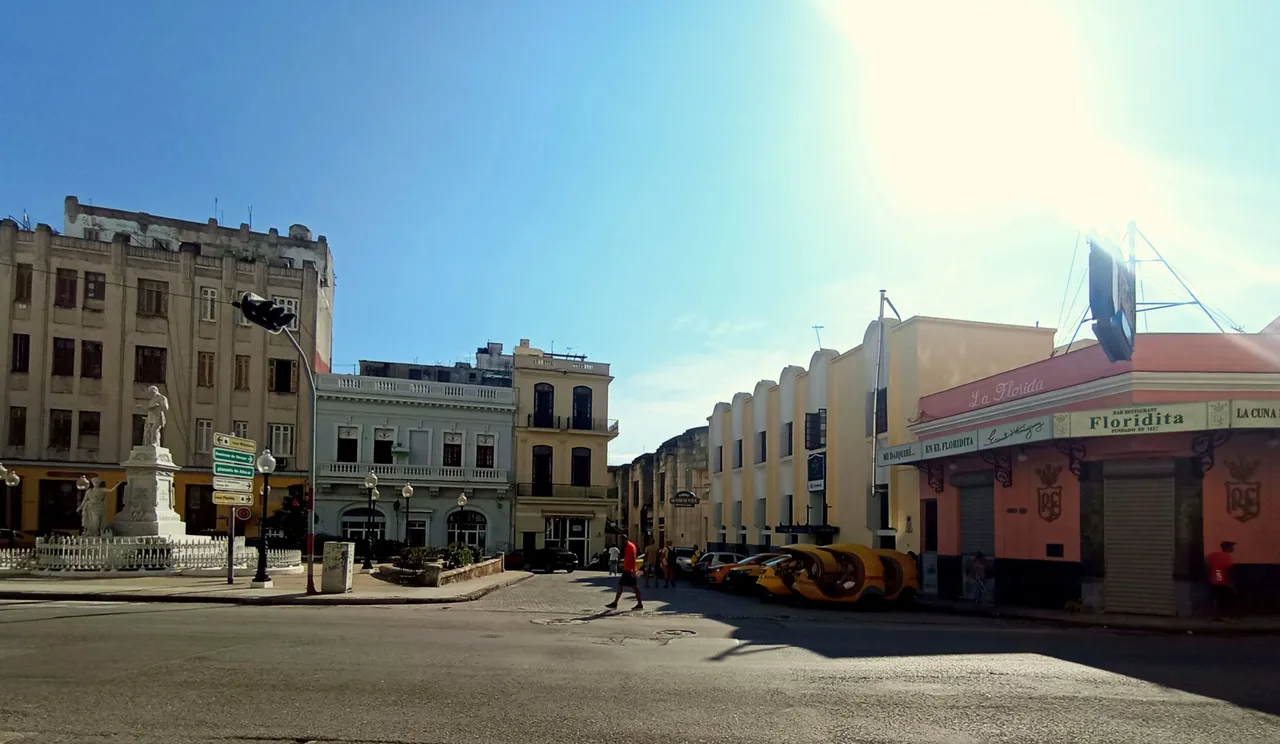
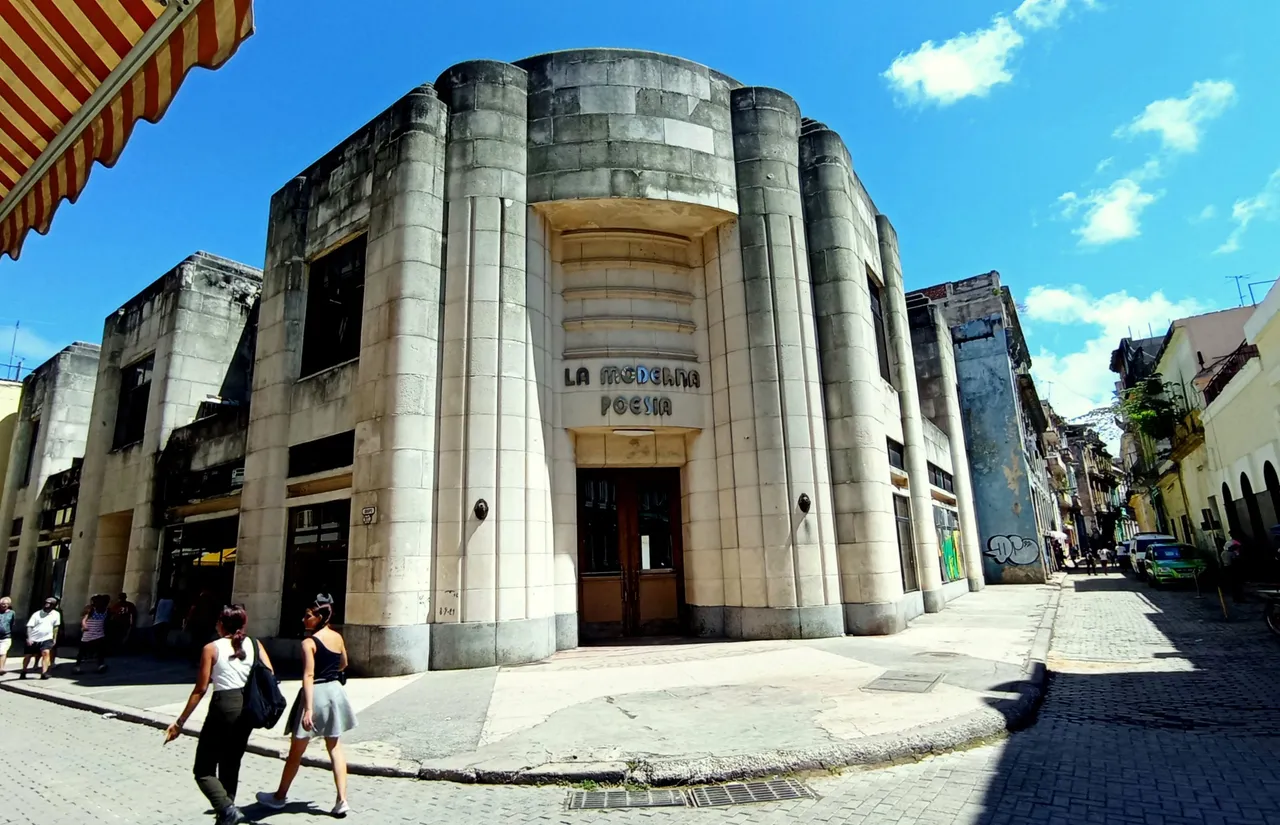
As you walk down this quaint, narrow cobblestone street, you will be surprised by bazaars, cafes, fashion houses, candy stores and coffee shops that blend into a vibrant architectural landscape. The facades show a mix of ancient columns with modern details and others retain their grand old style. The street is so narrow that, at times, it can be overwhelming with the number of buildings, but every step will captivate you even more, as you won't want to miss a single detail.
Al caminar por esta pintoresca y estrecha calle adoquinada, te sorprenderán bazares, cafés, casas de moda, tiendas de dulces y cafeterías que se funden en un vibrante paisaje arquitectónico. Las fachadas muestran una mezcla de columnas antiguas con detalles modernos y otras conservan su gran estilo antiguo. La calle es tan estrecha que, a veces, puede resultar abrumadora por la cantidad de edificios, pero cada paso te cautivará aún más, ya que no querrá perderse ni un solo detalle.
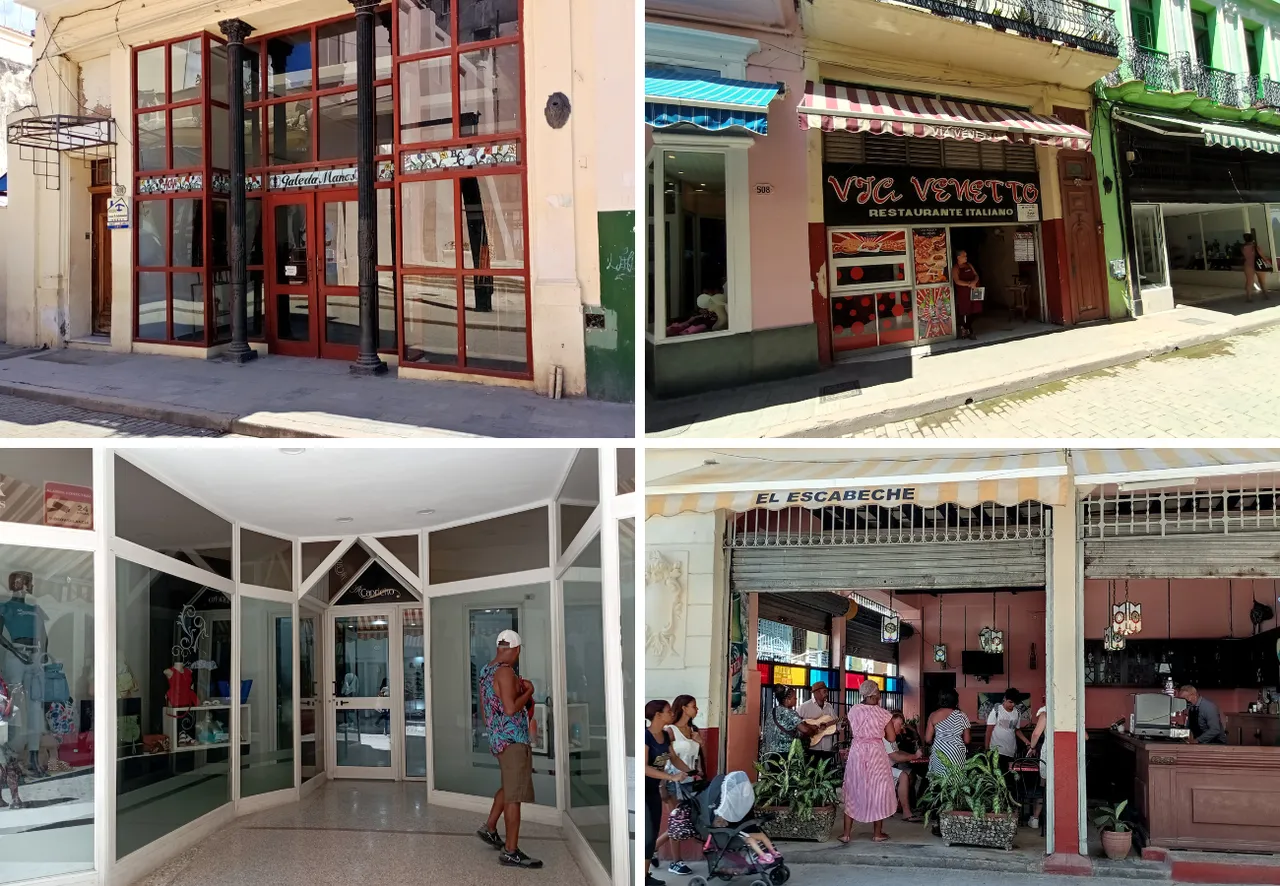
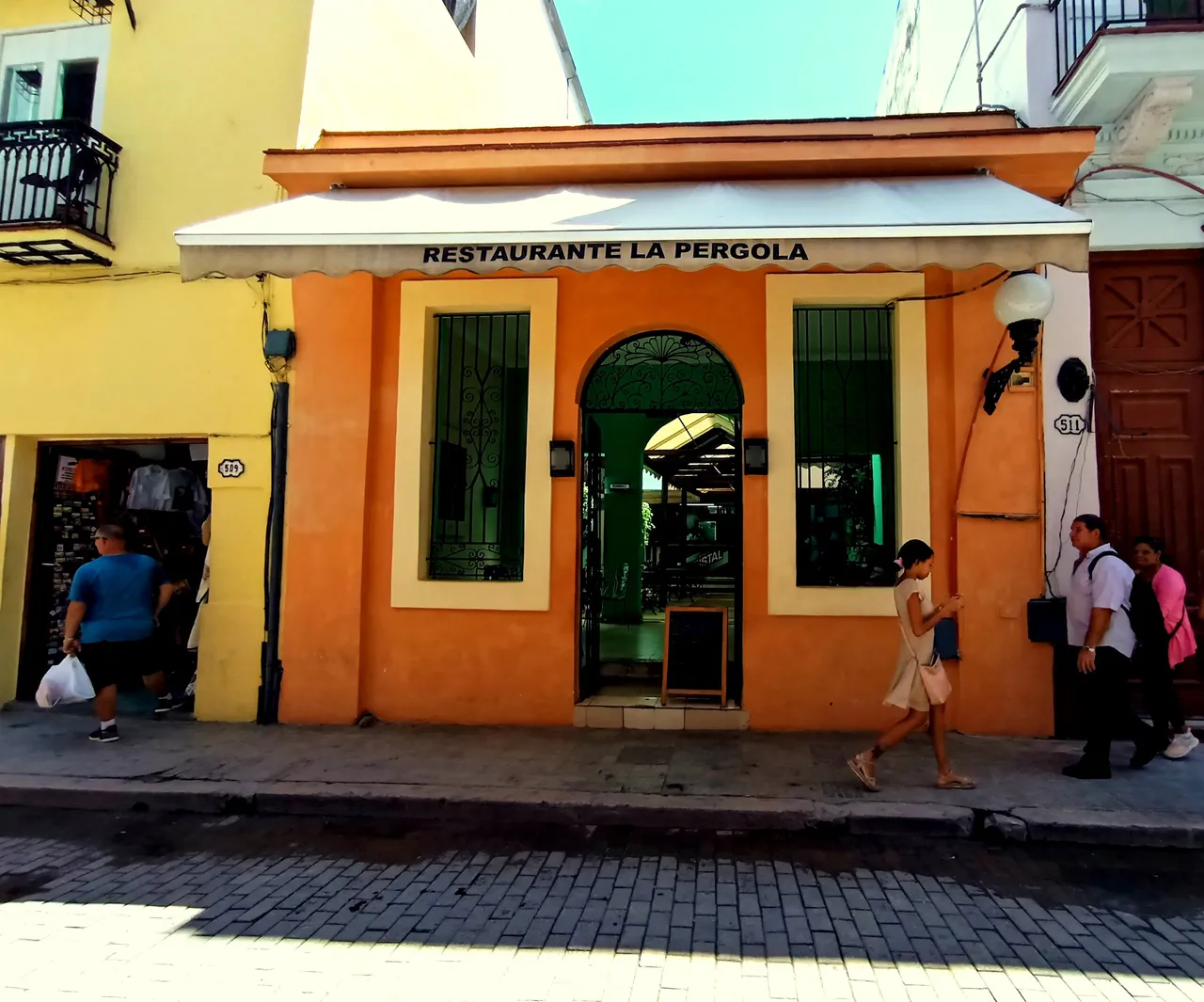
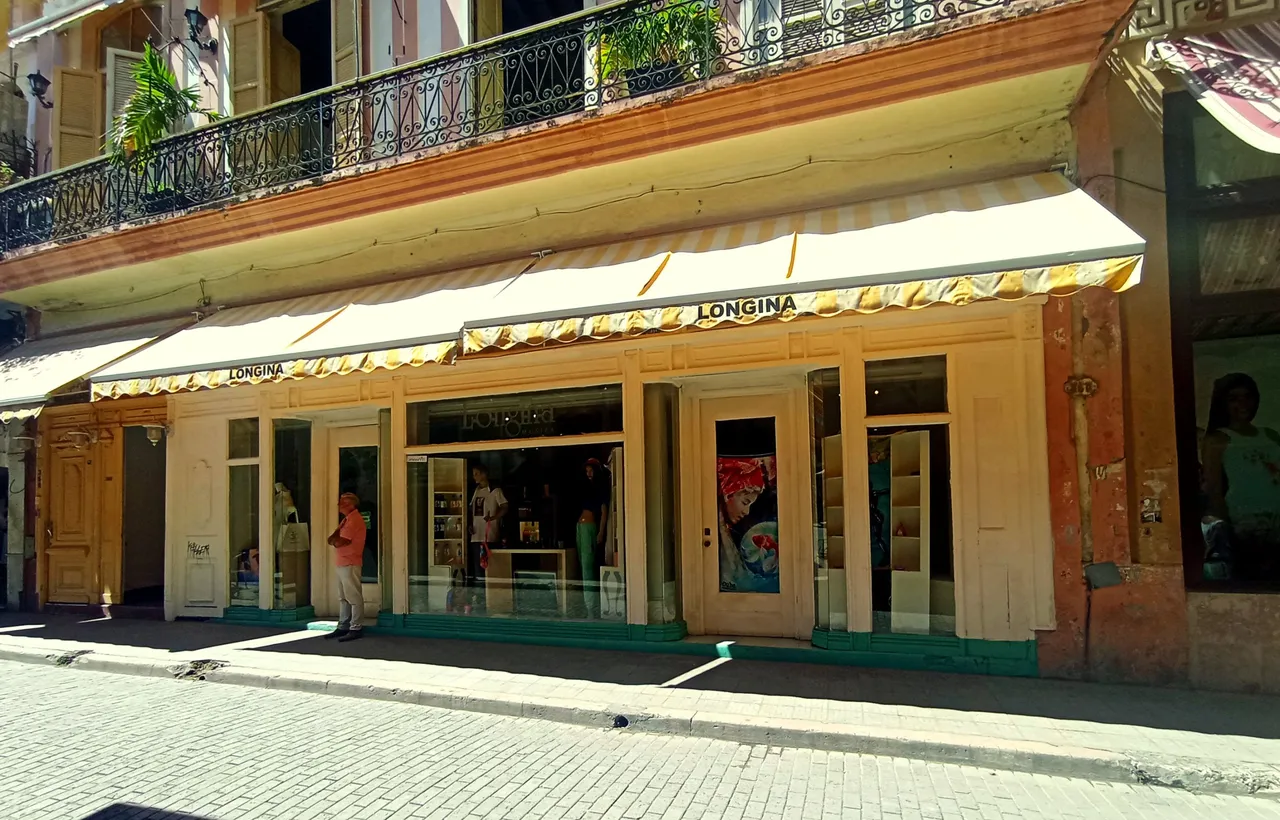
On Obispo Street, between Aguacate and Compostela, you will find a charming little park with a sculpture of Don Quixote's faithful squire and friend, the plump Sancho Panza. This small park invites you to rest with its vegetation and a pergola that provides shade. On the other side of the sidewalk, you will see the "Patio de los Artesanos", a space dedicated to handicrafts, where endless tables display the products made by skilled artisans. This place attracts numerous tourists in search of a souvenir of Cuba.
En la calle Obispo, entre Aguacate y Compostela, encontrarás un encantador parquecito con una escultura del fiel escudero y amigo de Don Quijote, el rollizo Sancho Panza. Este pequeño parque invita al descanso con su vegetación y una pérgola que proporciona sombra. Al otro lado de la acera, verás el "Patio de los Artesanos", un espacio dedicado a la artesanía, donde interminables mesas exponen los productos elaborados por hábiles artesanos. Este lugar atrae a numerosos turistas en busca de un recuerdo de Cuba.
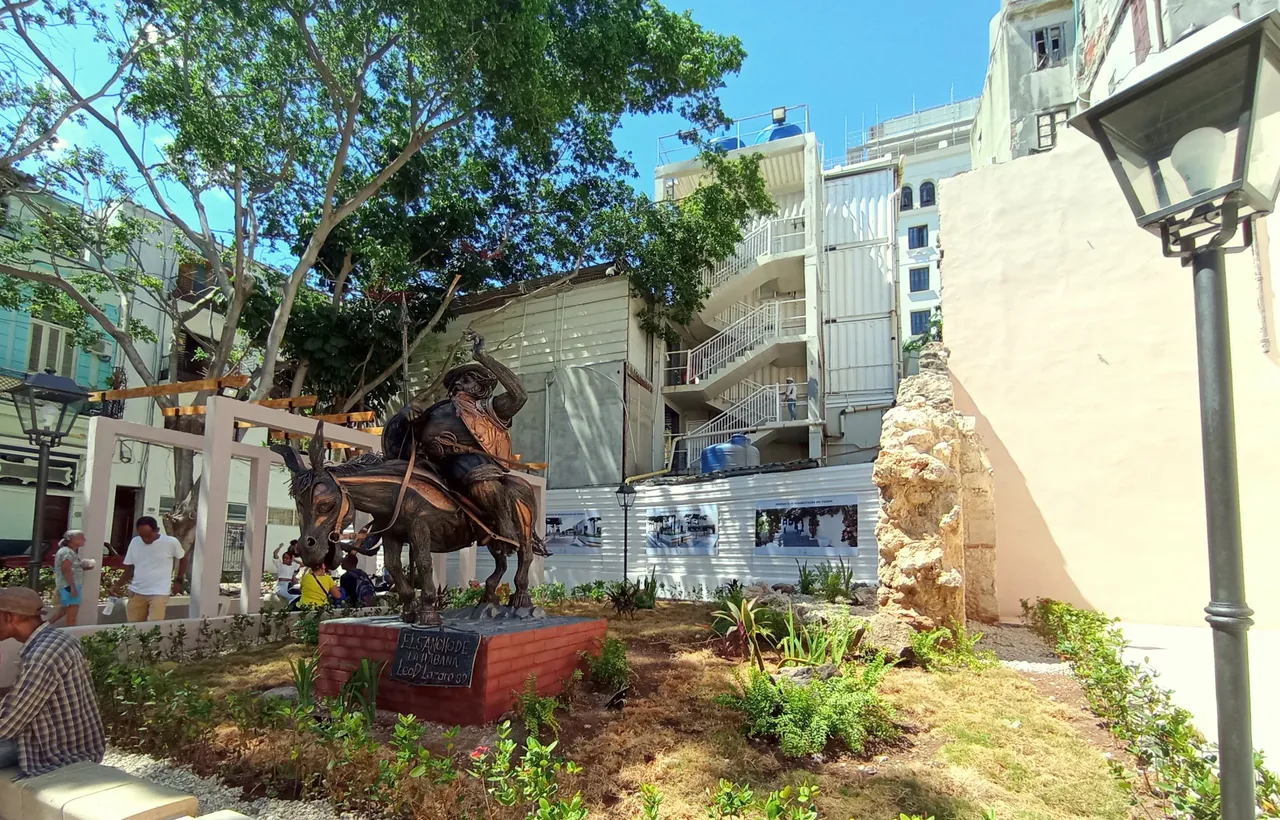
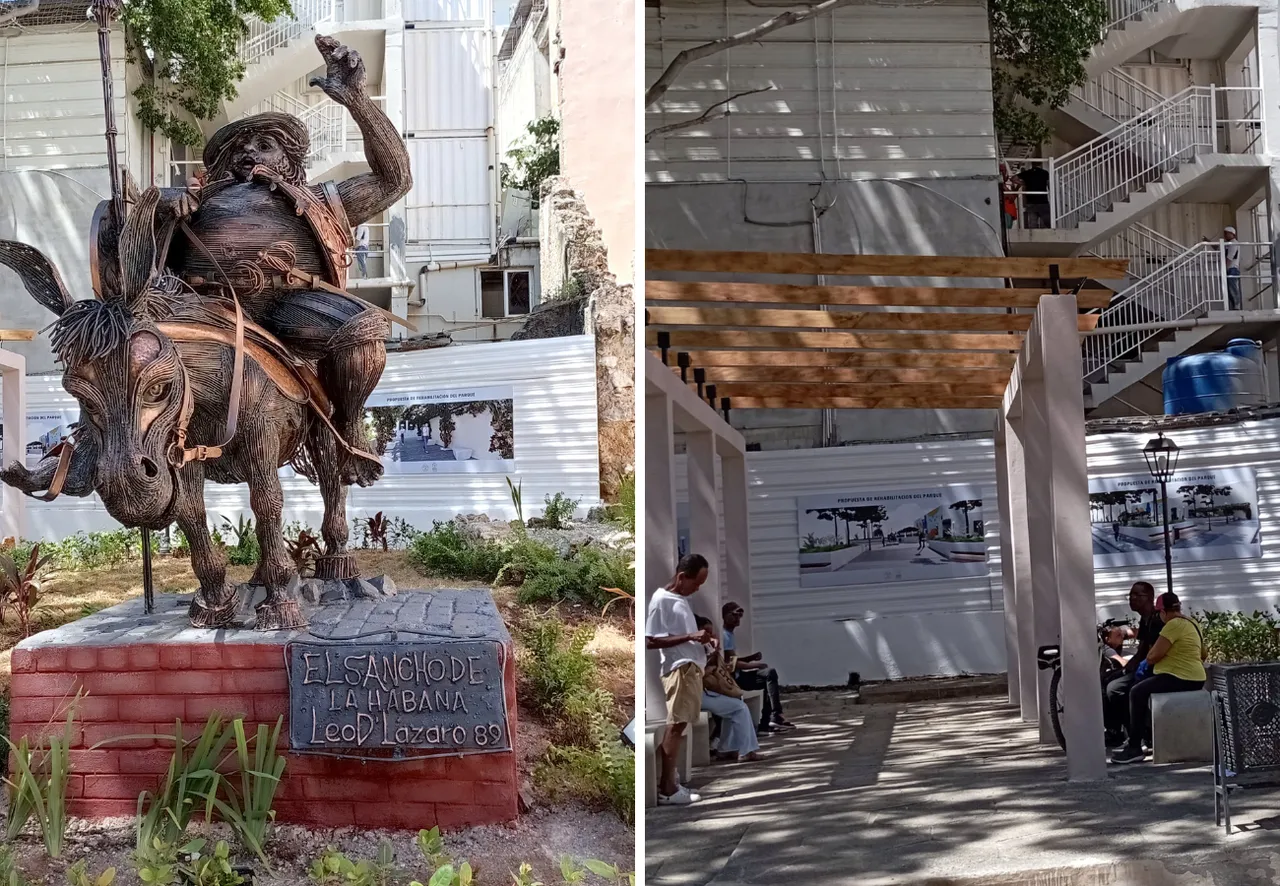
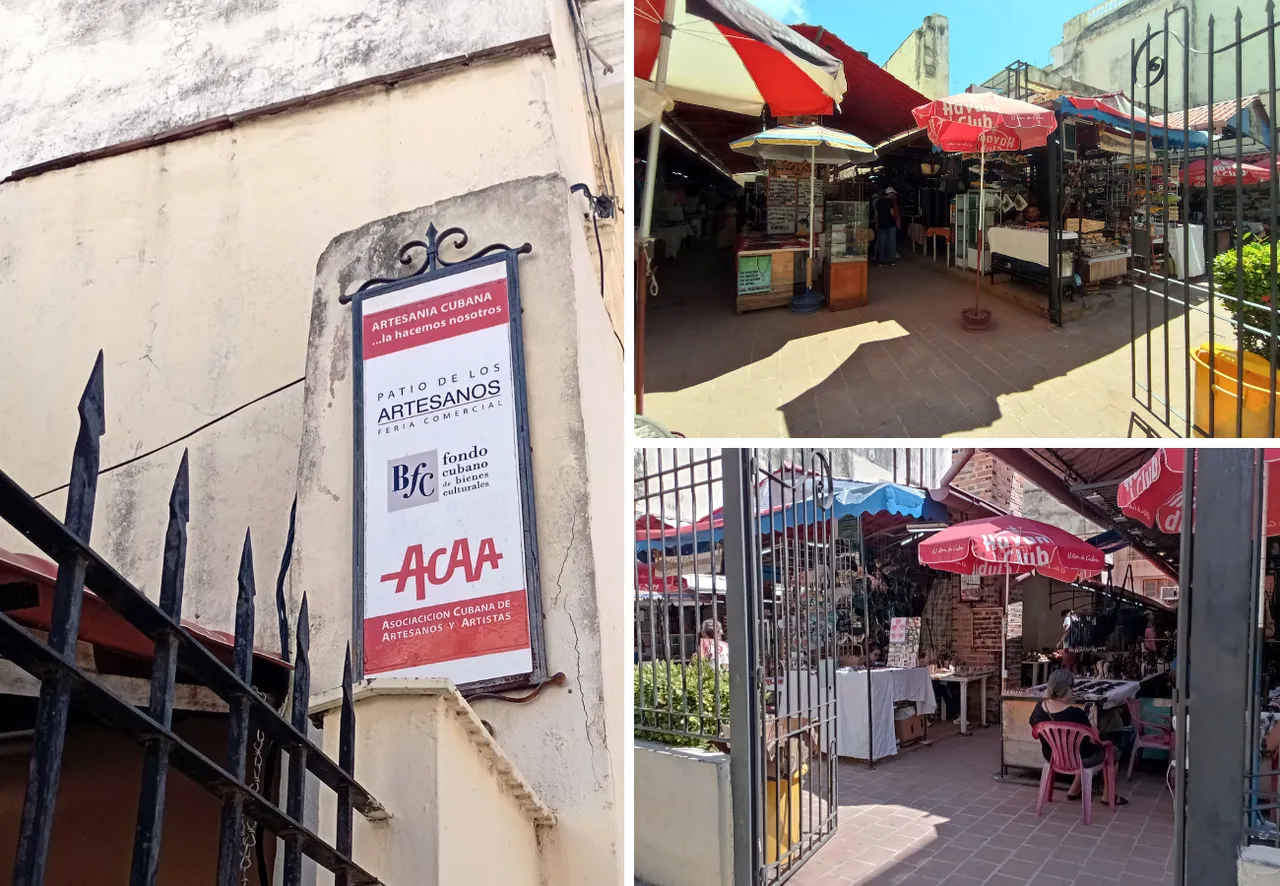
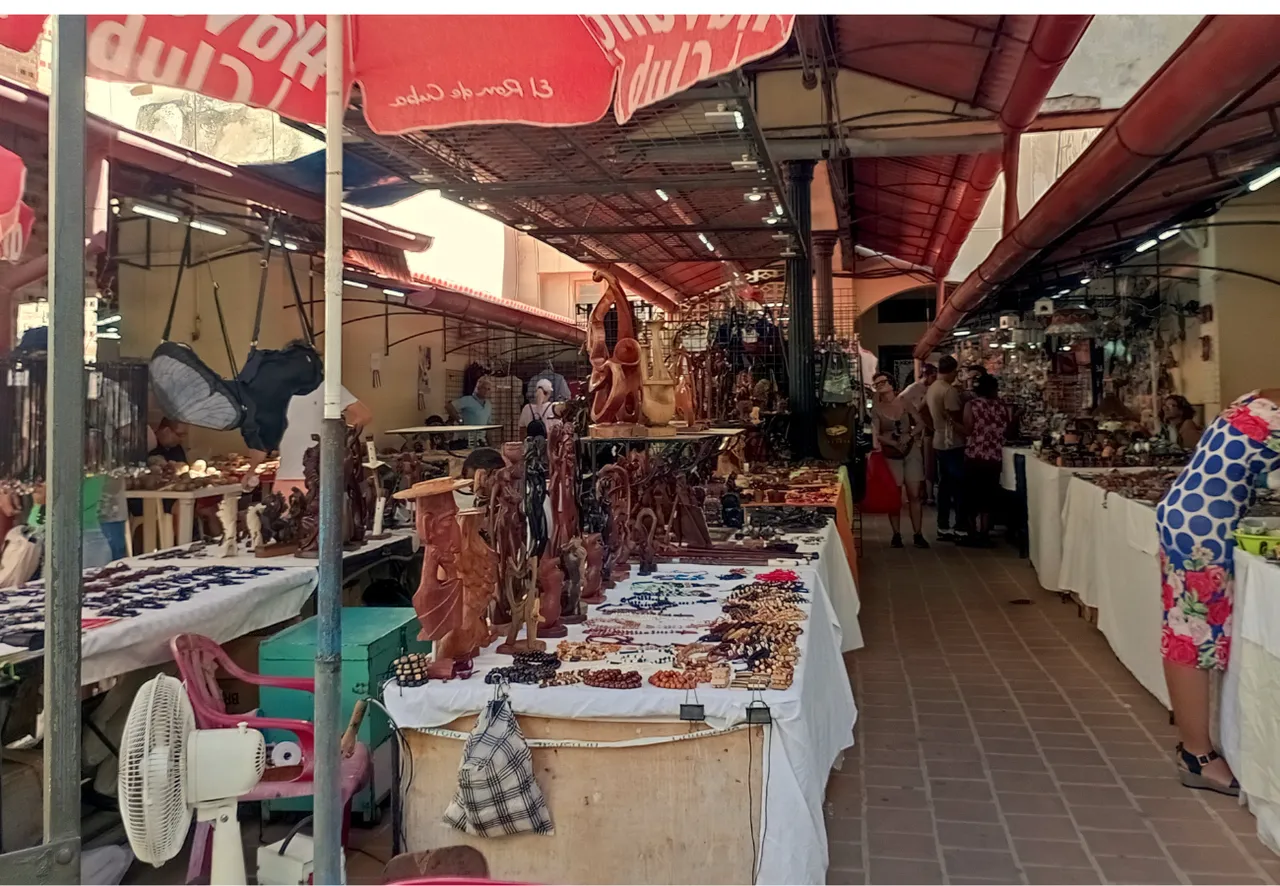
On the corner of Aguiar, there are three imposing buildings. At number 303, you will find a building dating from 1915. The "Europa" building, with its cafeteria on the second floor, stands out for its colonial style, with thick columns and projecting balconies. On the sidewalk across the street stands an imposing building, which currently houses the Cuban Book Institute, formerly known as "Banco Gomez-Menas", this 9-story building is one of the tallest in the area. Its pronounced eaves and the main entrance with large arches and columns are testimony of an architectural work that evidences the opulence of its owners in those years. Finally, on the same corner, is the famous Johnson & Johnson Drugstore, with a sequence of beautiful arches. It is currently closed for restoration work, but its facade is still impressive.
En la esquina de Aguiar, hay tres imponentes edificios. En el número 303, encontrará un edificio que data de 1915. El edificio "Europa", con su cafetería en el primer piso, destaca por su estilo colonial, con gruesas columnas y balcones salientes. En la acera de enfrente se alza un imponente edificio, que actualmente alberga el Instituto Cubano del Libro, antiguamente conocido como "Banco Gómez-Menas", este edificio de 9 plantas es uno de los más altos de la zona. Su pronunciado alero y la entrada principal con grandes arcos y columnas son testimonio de una obra arquitectónica que evidencia la opulencia de sus propietarios en aquellos años. Por último, en esa misma esquina, se encuentra la famosa Drogueria Johnson & Johnson, con una secuencia de bellos arcos. Actualmente está cerrada por obras de restauración, pero su fachada sigue siendo impresionante.
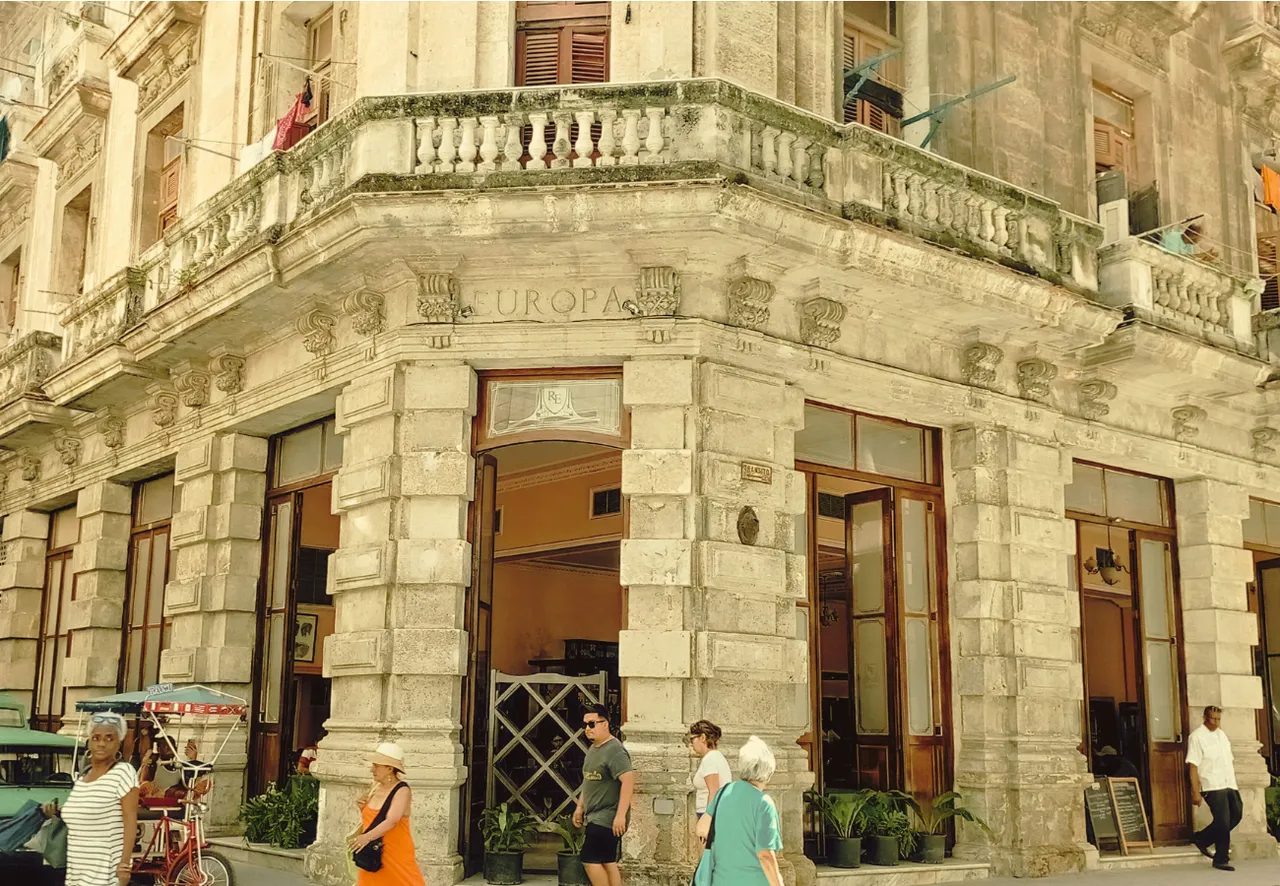
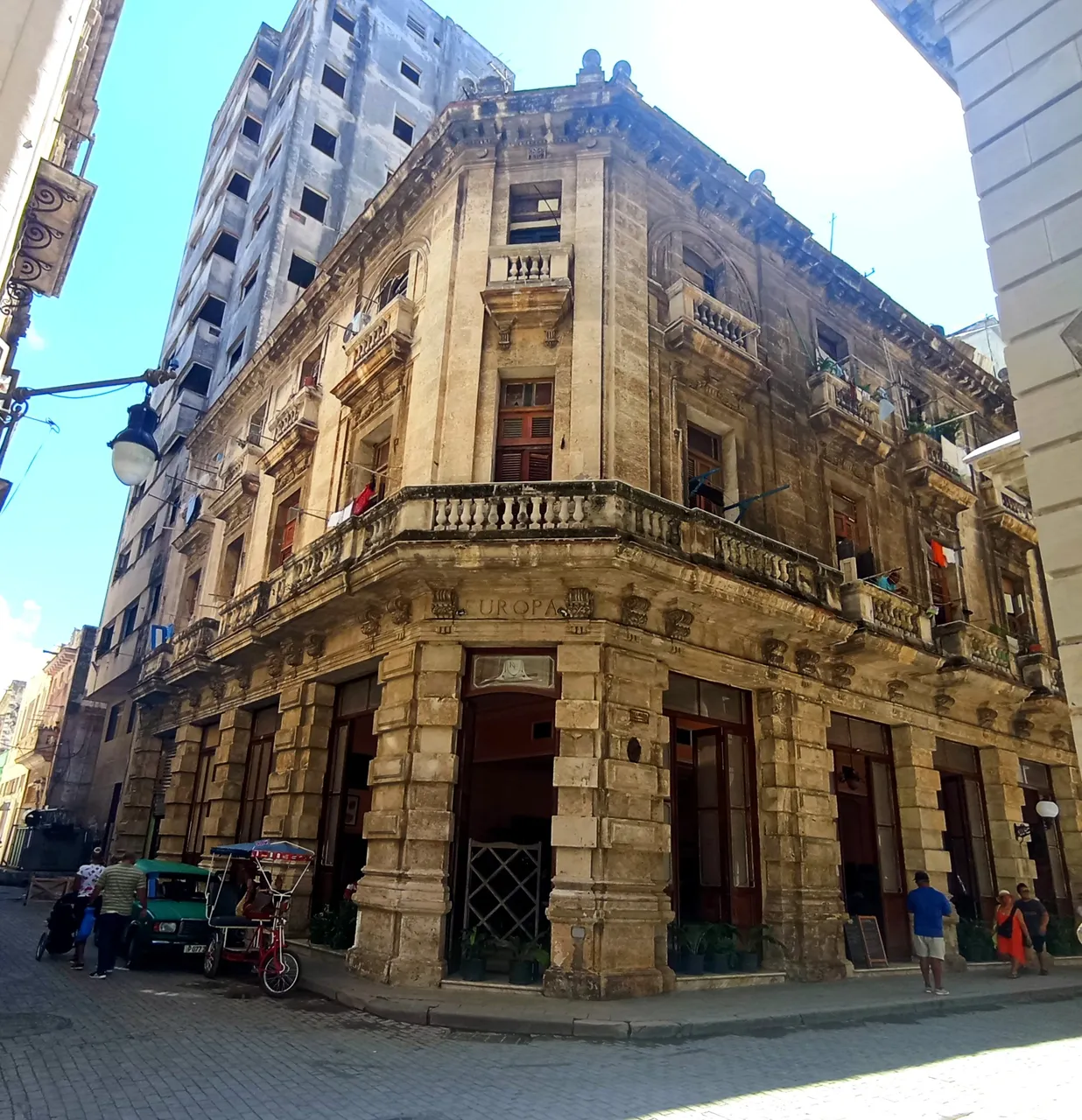
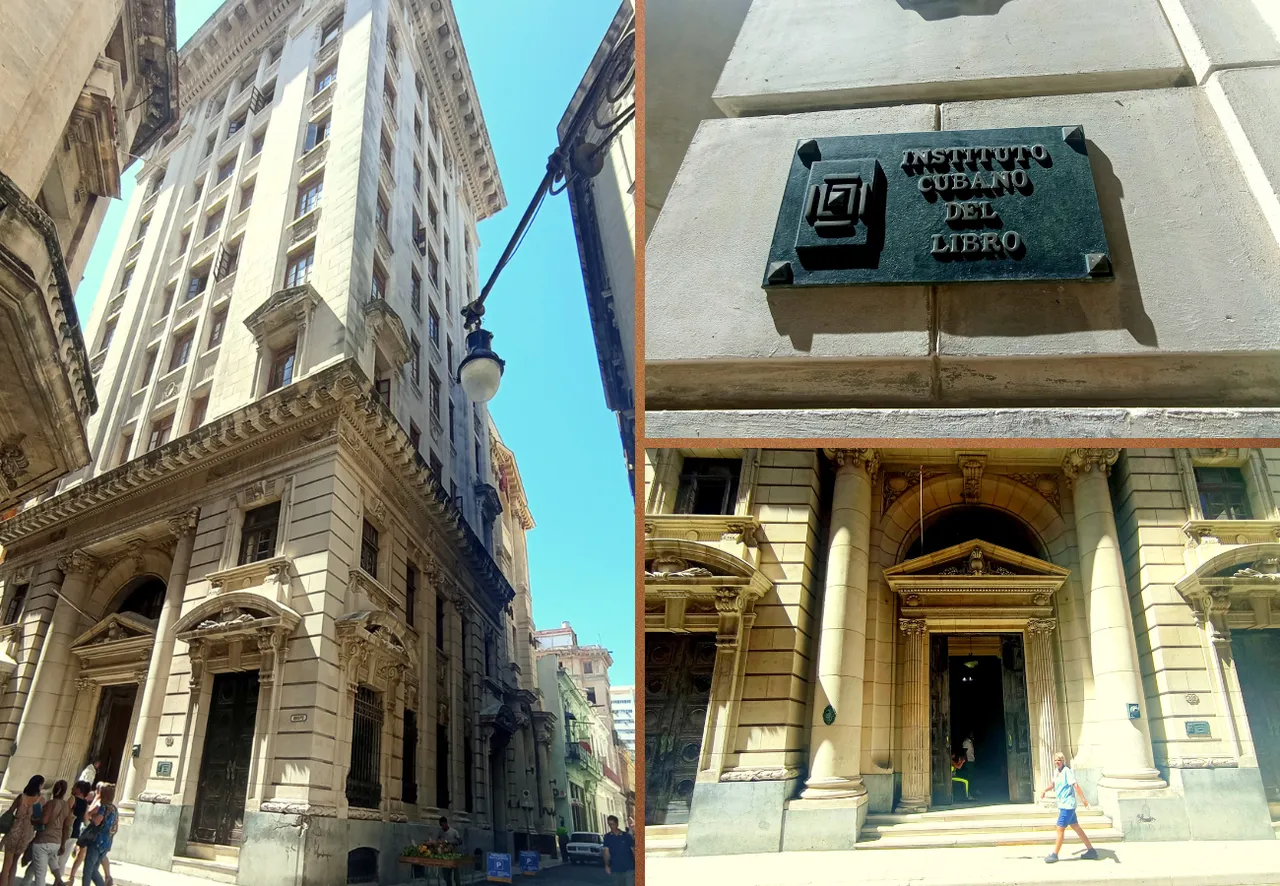
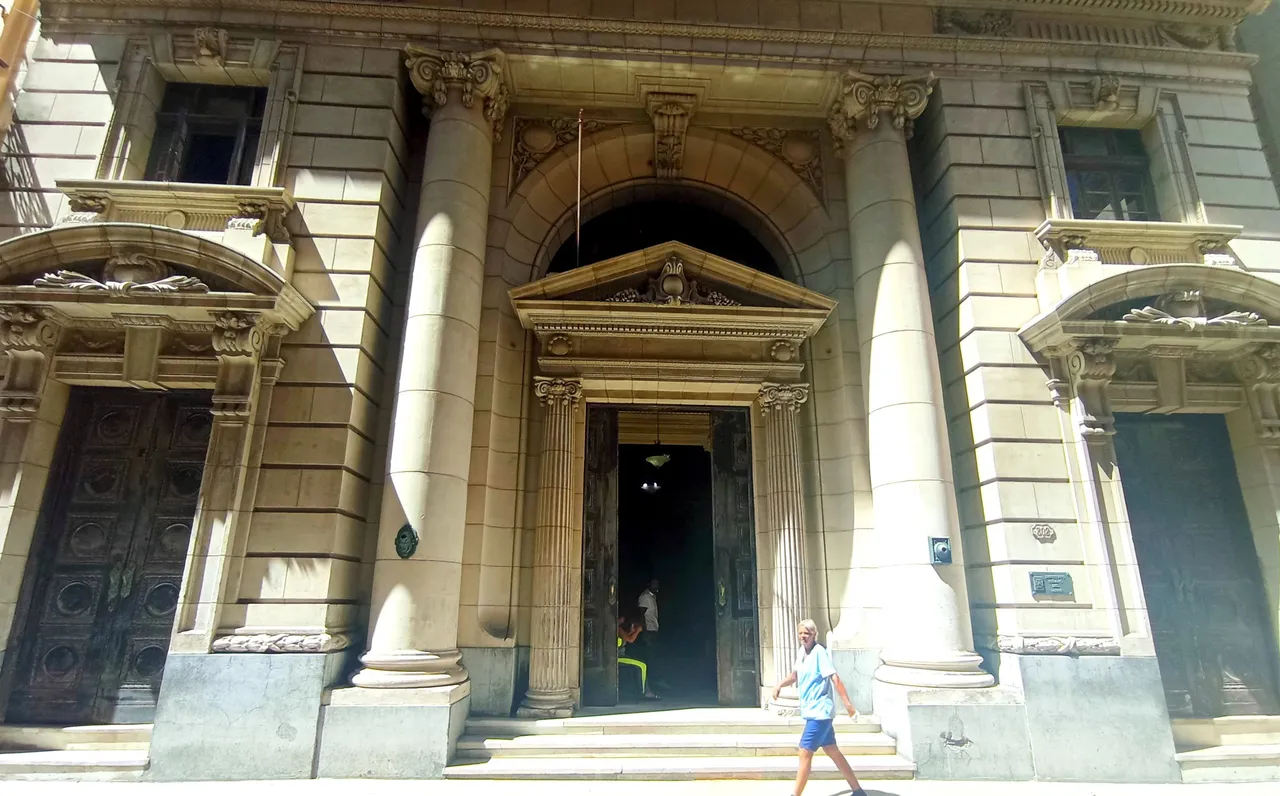
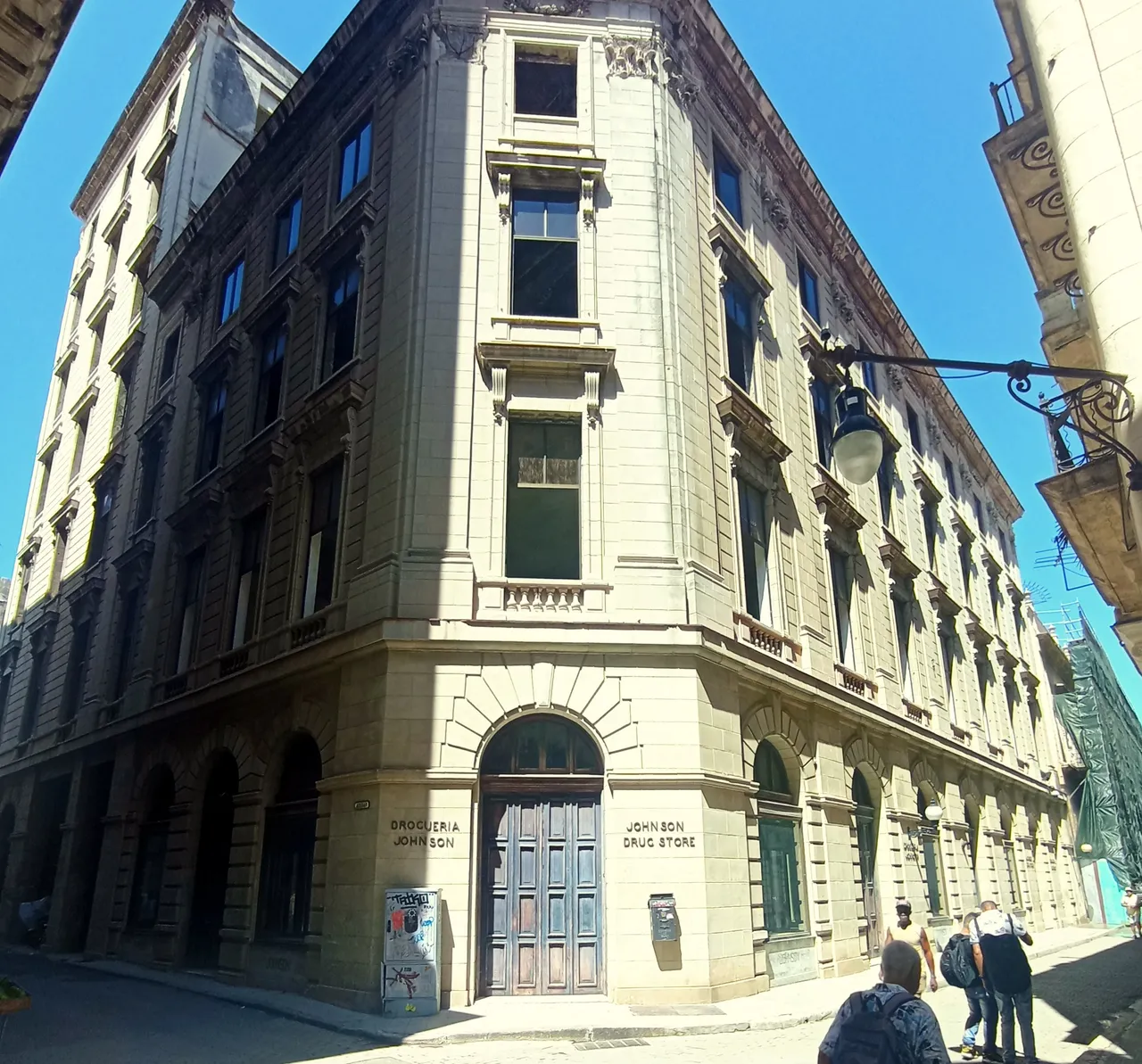
Another notable building between Aguiar and Obrapia streets is the Numismatic Museum, which used to be the Mendoza Bank. This building itself is a work of art, a wonderful example of Havana's heritage.
Otro edificio notable entre las calles Aguiar y Obrapia es el Museo Numismático, que solía ser el Banco Mendoza. Este edificio en sí mismo es una obra de arte, un maravilloso ejemplo del patrimonio de La Habana.
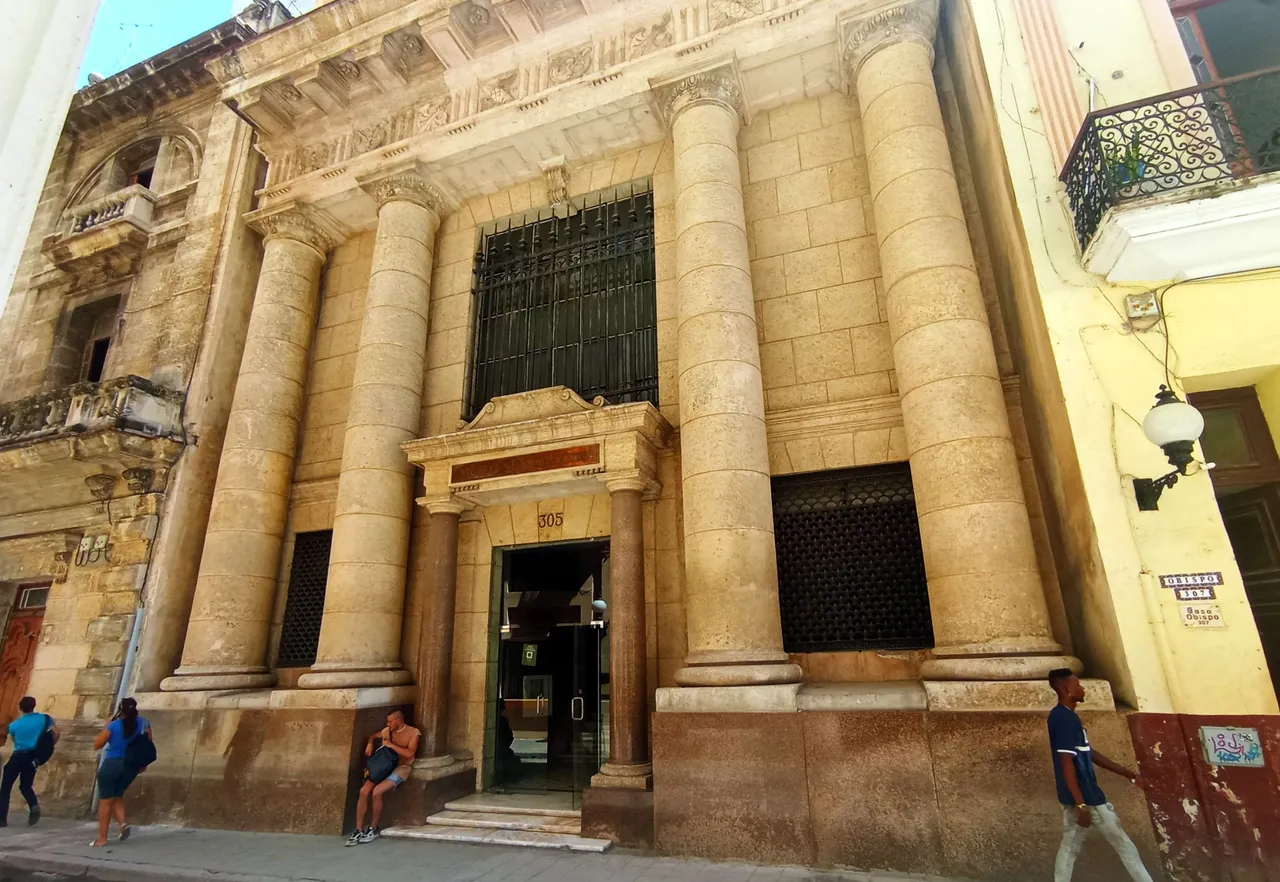
On this busy street, full of significant buildings, on the corner of Mercaderes Street is the emblematic Hotel Ambos Mundos. This place was home to Nobel Literature Prize winner Ernest Hemingway for long periods of time. On the opposite sidewalk is the University of San Geronimo, which due to arduous restoration work, resurfaced from its ruins in 2006 and reopened its doors with a degree in Preservation and Management of Cultural Heritage. In this magnificent building, modernity merges with some architectural elements of its past.
En esta nutrida calle, repleta de significativos edificios, en la esquina de la calle Mercaderes se encuentra el emblemático Hotel Ambos Mundos. Este lugar fue hogar del premio Nobel de Literatura Ernest Hemingway durante largas temporadas. En la acera contraria se encuentra la Universidad de San Gerónimo, que debido a un arduo trabajo restaurativo, resurgió de sus ruinas en el año 2006 y reabrió sus puertas con la carrera de Licenciatura en Preservación y Gestión del Patrimonio Cultural. En este magnífico edificio, la modernidad se fusiona con algunos elementos arquitectónicos de su pasado.
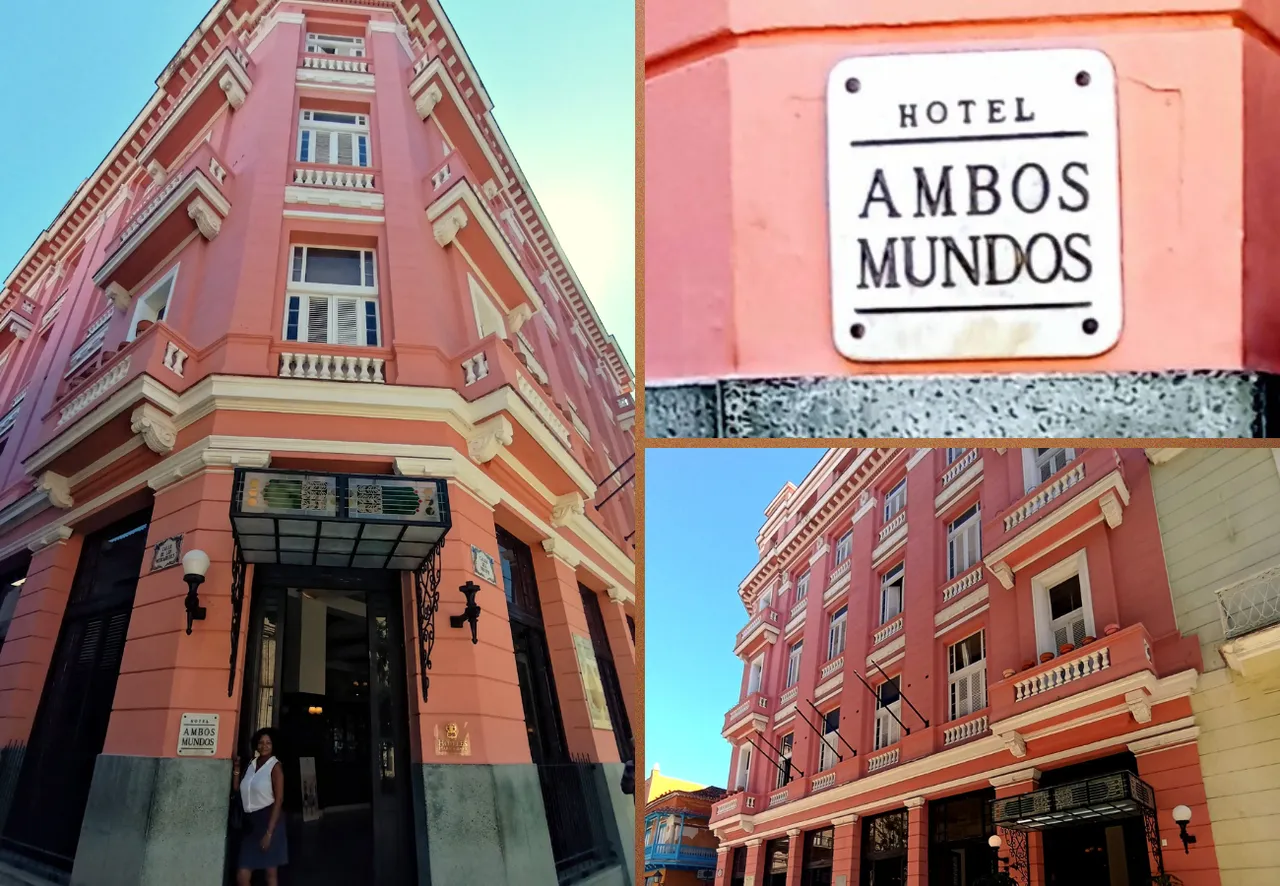
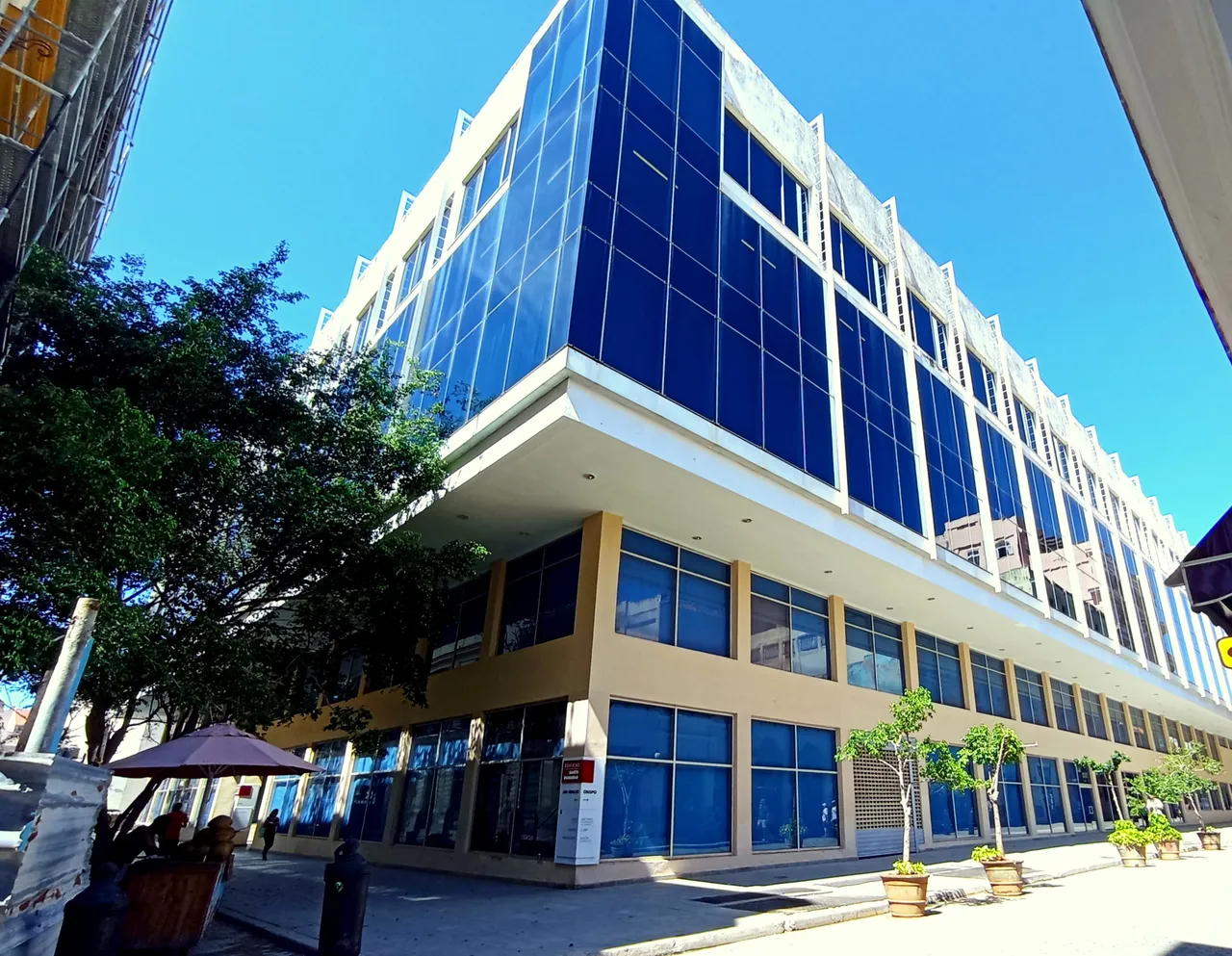
I continued moving towards the Plaza de Armas and in the next block, there are some museums and stores, such as Quitrin, dedicated to making all kinds of clothing and handmade fabrics. You will also find bakeries, candy shops, restaurants, all very well preserved and painted with bright colors, balconies with beautiful turned wood structures very nice.
Seguí avanzando en dirección a la Plaza de Armas y en la siguiente cuadra, hay algunos museos y tiendas, como Quitrin, dedicada a confeccionar todo tipo de ropa y telas artesanales. También encontrarás panaderías, dulcerías, restaurantes, todos muy bien conservados y pintados con colores vivos, balcones con hermosas estructuras de madera torneada muy bonitos.
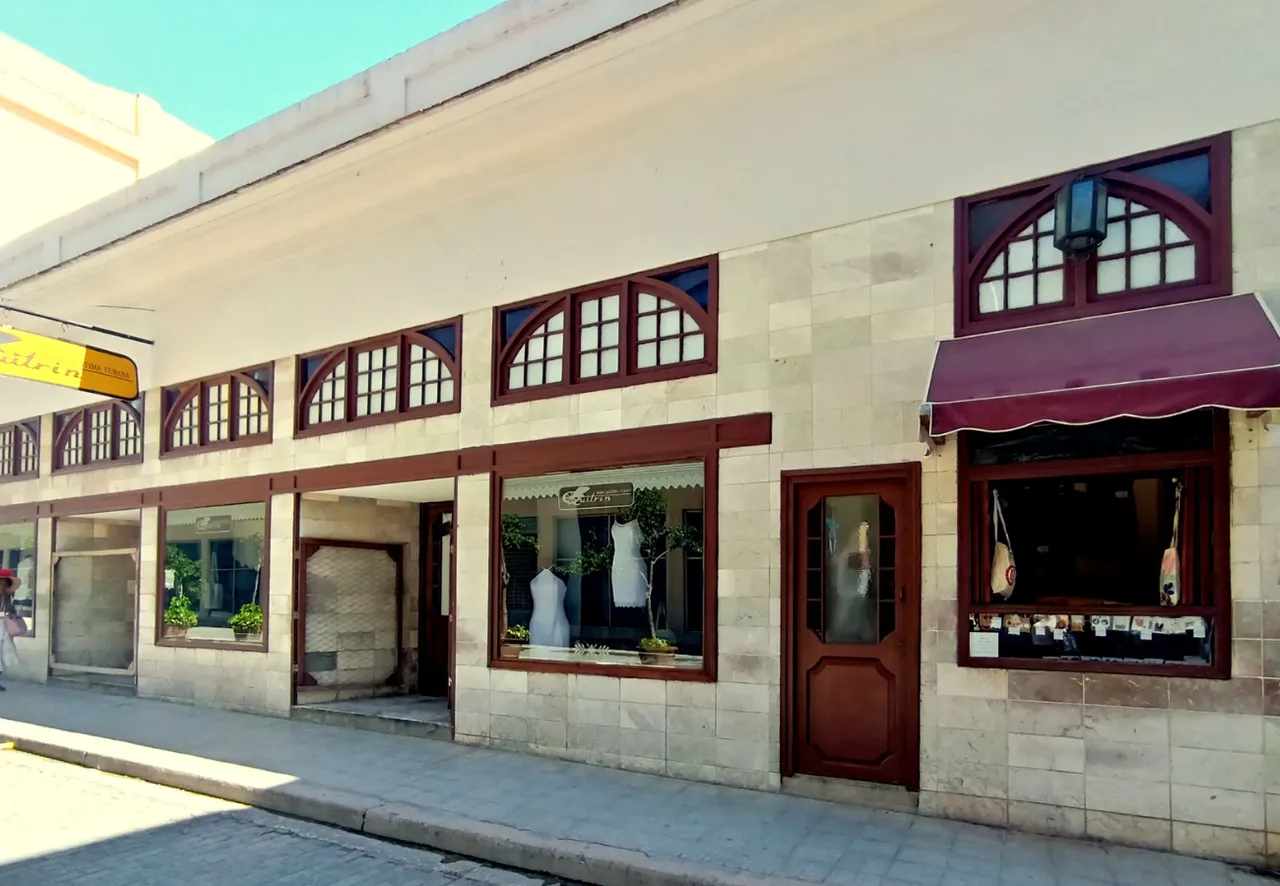
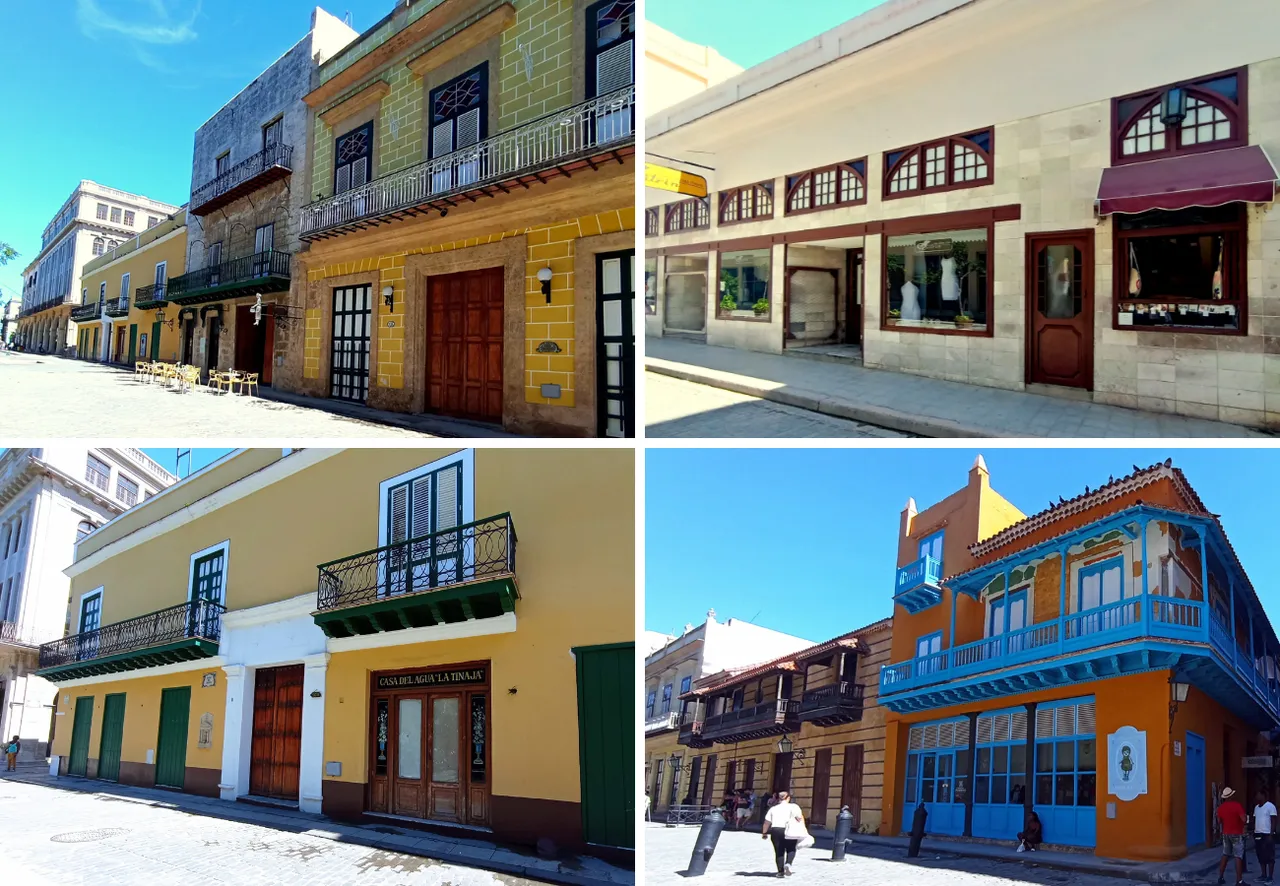
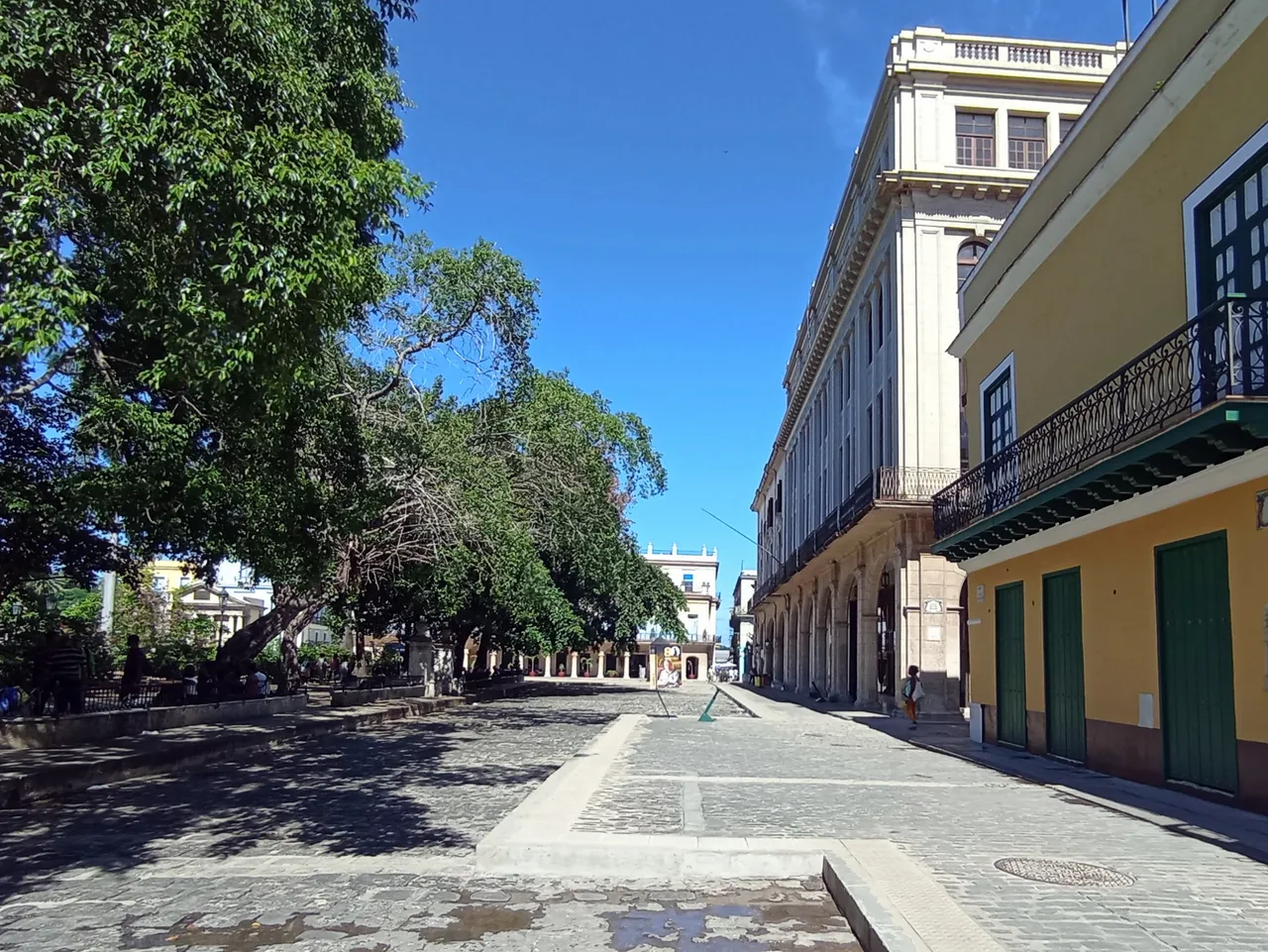
Finally, you will arrive at the Plaza de Armas with its corridors of columns, semicircular arches and balconies with stained glass windows. This is the end of this boulevard, the longest in Havana, full of great buildings, culture and history.
Finalmente, llegará a la Plaza de Armas con sus corredores de columnas, arcos de medio punto y balcones con vidrieras. En este lugar termina este bulevar, el más largo de La Habana, lleno de grandes edificios, cultura e historia.
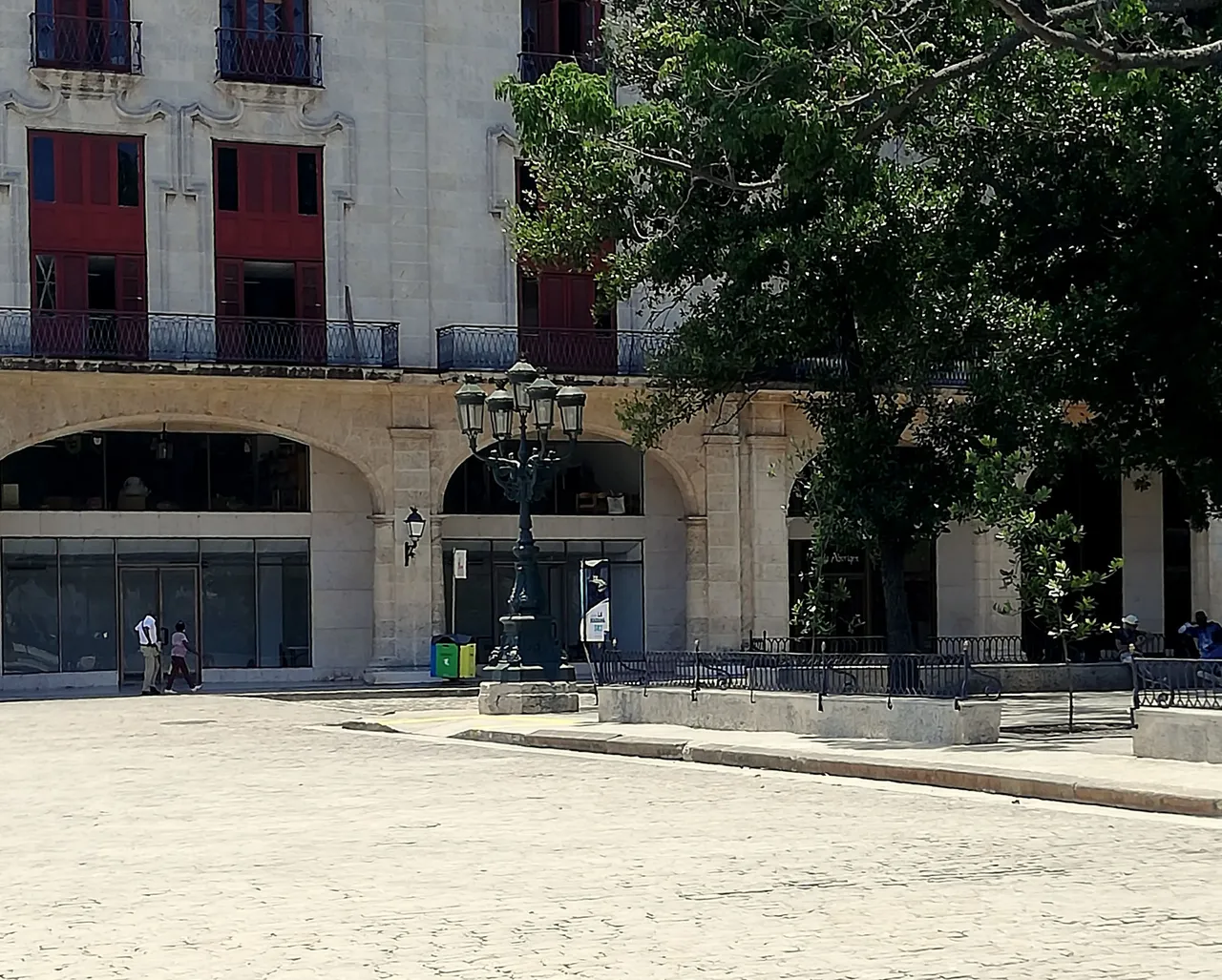
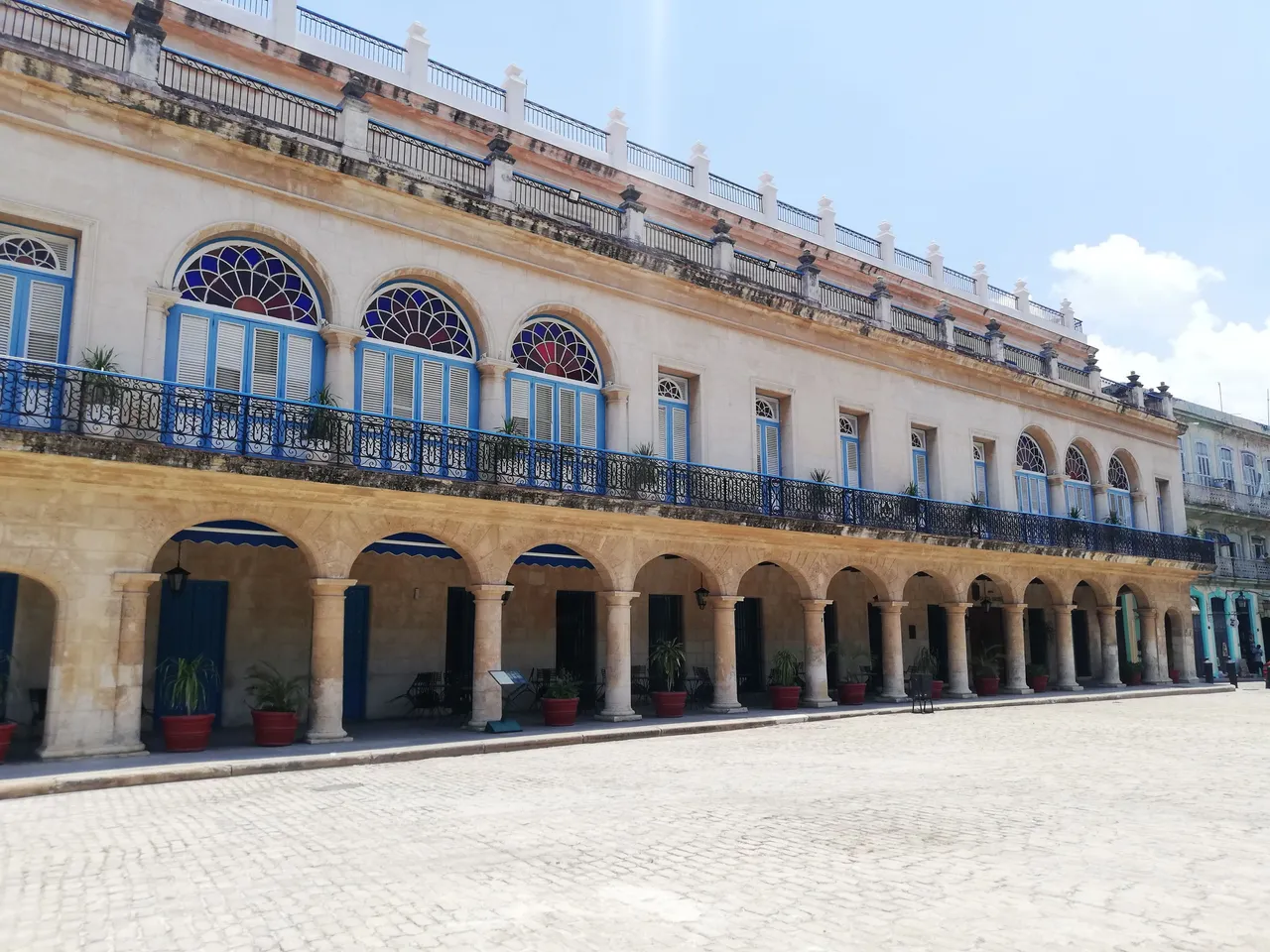
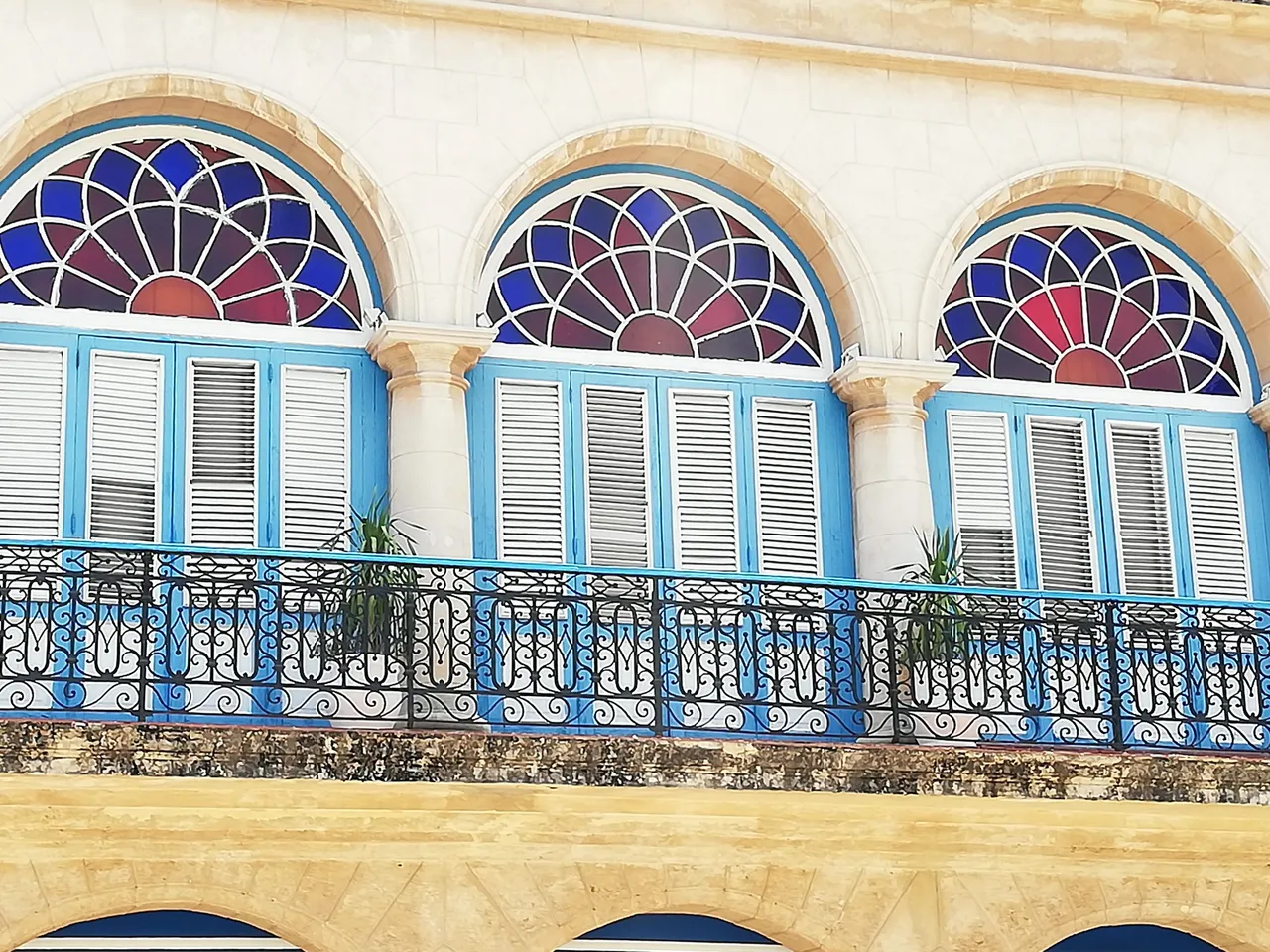
I hope you enjoyed the tour and feel motivated to make your own. I am sure you will discover things that I could not see, because, as much as I wanted to, my eyes could not take it all in that intricate and eternal labyrinth of blocks, cobblestones and columns. Obispo Street always holds surprises and charms in every corner.
Espero que hayan disfrutado del recorrido y se sientan motivados para hacer el suyo propio. Estoy segura de que descubrirán cosas que yo no pude ver, pues, por más que quise, mis ojos no alcanzaron a abarcarlo todo en ese intrincado y eterno laberinto de bloques, adoquines y columnas. La calle Obispo siempre guarda sorpresas y encantos en cada rincón.
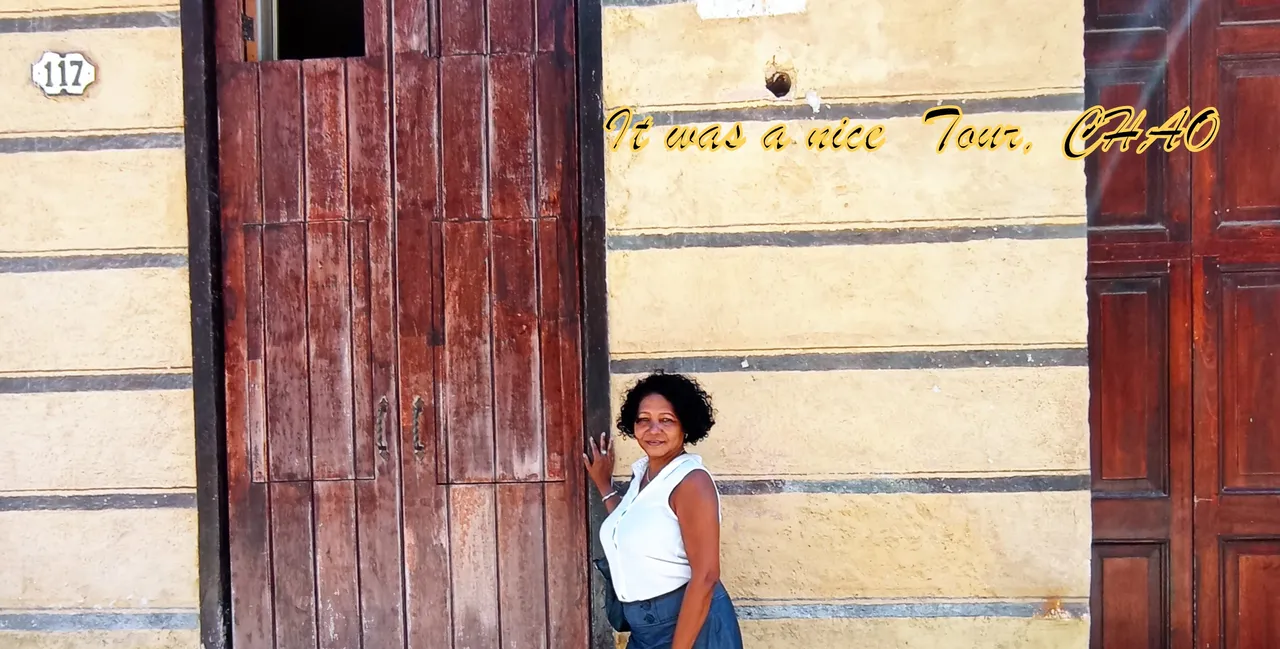

Las fotos fueron tomadas con mi teléfono Xiaomi Note 11
Utilice Traductor DeepL
To check some details and dates, I consulted the following page.Source